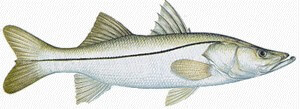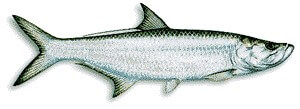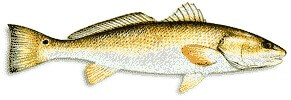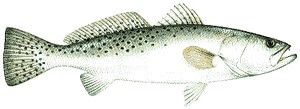
A popular species on the West Central Coast, Snook are commonly referred to as a "linesider" due to their prominent lateral line. Snook live among mangrove shorelines, grass flats, seawalls, bridges, docks, pilings, and can also be found on reefs. Most catches are 5 to 8 pounds and the Florida record is 44 pounds, 3 ounces. Snook spawn primarily in summer and are intolerant to water temperatures below 60 degrees. Snook feed on small fish, crabs, shrimp and will succumb to the temptation of many artificial lures.

The Tarpon or "Silver King" has no match and put Boca Grande, Florida on the map. Tarpon are found primarily inshore on grass flats, sandbars, around bridges and along the miles of beaches up and down the Suncoast. Spawning occurs from May to September and it is believed that adult Tarpon can live to be 60 years or older. Common catches for anglers are from 40 to 150 pounds and the Florida Record is 243 pounds. Tarpon Feed on fish, crabs and shrimp and can be caught on a variety of artificial lures.

Redfish, or simply "Reds", are common catches in inshore waters of the coast. Redfish are found on grass flats, in channels, around oyster beds and among mangrove shorelines. At approximately 30 inches Reds migrate offshore to join the spawning schools where spawning occurs from August to November. Catches range from 6 to 8 pounds with landings of fish up to 20 pounds. The Florida record is 51 pounds, 8 ounces. Redfish feed on small fish, crabs and shrimp and can be caught with an array of artificial baits.

The Seatrout benefited highly from the Florida net ban and catches of more and larger fish are commonplace. Trout are found among mangrove shorelines, oyster beds, grass flats and sandy and muddy bottom. Seatrout spawn inshore from March through November in grass beds. Catches are common up to 4 pounds and the Florida record is 15 pounds, 6 ounces. Trout feed on small fish and shrimp and will likely take an artificial lure of any type.